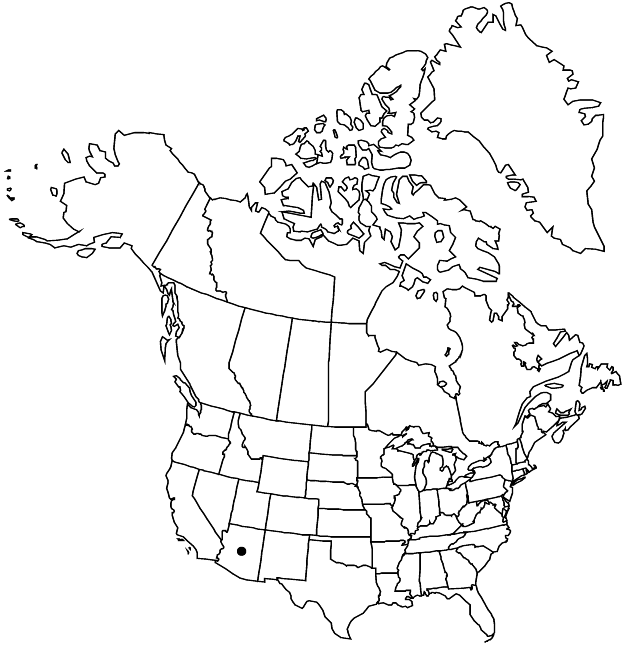Eriogonum ripleyi
Leafl. W. Bot. 4: 5. 1944.
Subshrubs, sprawling to decumbent, occasionally scapose, 0.5–2.5 (–4) × 0.5–5 (–7) dm, grayish-tomentose. Stems decumbent to slightly spreading or erect, often with persistent leaf-bases, up to 1/4 height of plant; caudex stems absent or compact; aerial flowering-stems spreading to erect, slender, solid, not fistulose, 0.05–2.5 (–3.5) dm, tomentose. Leaves cauline, 1 per node or fasciculate; petiole 0.05–0.15 cm, villous; blade narrowly oblanceolate, 0.2–0.6 × 0.05–0.1 cm, densely white-tomentose abaxially, thinly floccose to villous adaxially, margins revolute. Inflorescences cymose-umbellate or capitate and reduced to single involucre; branches usually dichotomous, sometimes with secondaries suppressed, occasionally absent, tomentose; bracts absent. Peduncles erect, 0.1–1.5 cm, thinly floccose. Involucres 1 per node, campanulate, 3–3.5 × 3–3.5 mm, thinly floccose or villous to subglabrous; teeth 3–5, erect, 0.7–1 mm. Flowers 3.5–4.5 mm; perianth white, glabrous; tepals connate proximal 1/5, dimorphic, those of outer whorl nearly orbiculate, 3–3.5 mm wide, those of inner whorl broadly obovate, 2–2.5 mm wide; stamens long-exserted, 4–5 mm; filaments villous to densely pilose proximally. Achenes light-brown, 2–2.5 mm, glabrous.
Phenology: Flowering Mar–Jun.
Habitat: Sandy clay flats and slopes on edge of sandstone outcrops, oak-juniper woodlands
Elevation: 1000-1900 m
Discussion
Of conservation concern.
Eriogonum ripleyi is known only from two areas in Arizona, one near Frazier’s Well in Coconino County and a second in the Verdi Valley area of southeastern Yavapai and extreme northwestern Maricopa counties. The species is worthy of cultivation. Ripley’s wild buckwheat is considered a “sensitive” species in Arizona.
Selected References
None.
Lower Taxa
"/2" is not declared as a valid unit of measurement for this property."dm" is not declared as a valid unit of measurement for this property."dm" is not declared as a valid unit of measurement for this property."dm" is not declared as a valid unit of measurement for this property."dm" is not declared as a valid unit of measurement for this property.
